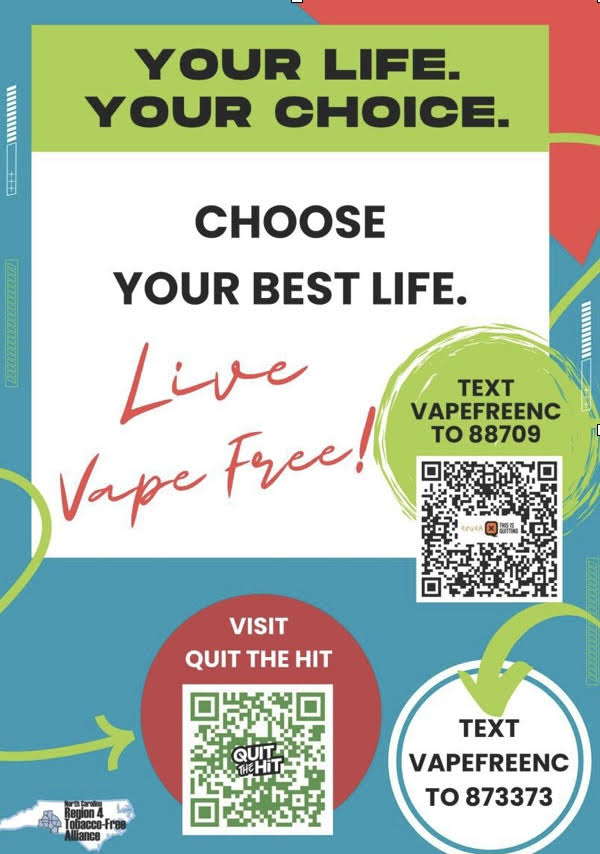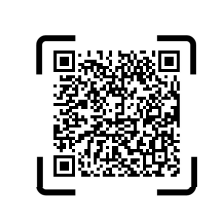
BY DEBBIE PAGE
Although the federal government raised the legal age to purchase tobacco products to 21 in December of 2019, North Carolina is one of eight states who have not followed suit, jeopardizing the Tar Heel State’s eligibility for federal substance use disorder treatment funds.
Raising the age to purchase tobacco products is part of an evidence-based strategy to reduce youth tobacco use. To match federal law, the legislature must adopt a new law that raises the legal age of purchase to 21.
Carleen Crawford, regional tobacco control manager for the Region 4 Tobacco Free Alliance, said an interagency group, including the Tobacco Prevention and Control Branch, the N.C. Division of Mental Health, the ABC Commission, the N.C. Department of Revenue, Alcohol Law Enforcement agency, the N.C. Department of Justice and others, are reviewing laws passed in other states to help craft the most effective legislation.
Importantly, Crawford said the law should include tobacco retail permitting/licensing, which is an evidence-based measure to reduce tobacco sales to youth and would help to level the playing field. Currently, no permitting is necessary to sell tobacco products in North Carolina.
However, since the N.C. General Assembly is currently in short session with no bill yet introduced, no action is likely until the long session in the fall. Time is short because by 2025 each state must show a reduction in sales to youth under 21 or suffer the loss of federal funding.
Recent statistics show that North Carolina will unlikely meet federal compliance requirements without a change in the law. A recent ECU/Rudgers T21 project used 19 to 20 year olds to purchase vaping and tobacco products to test compliance with the federal age 21 requirement. Three out of four stores in Pitt County sold to the youths.
In 2025, the state’s under 21 tobacco/vape violations must be under 20 percent to comply with Synar federal laws or North Carolina will lose up to 10 percent of federal block grant funds (more than $5.2 million) used for substance use disorder treatment.
Resolutions and letters of support are being collected by the Tobacco Free Alliance from agencies and organizations across the state to help spur legislators to act. Letters supporting the effort can be sent to Kristin Blumenstein of the Drug-Alcohol Coalition of Iredell (kristin@daciredell.com).
Crawford said school personnel with access to confiscated tobacco or nicotine products can also help monitor teen tobacco use. The Rutgers Center for Excellence in Rapid Surveillance of Tobacco asks administrators to use the QR code below to follow instructions and upload a picture of the confiscated product to further its data collection.

Crawford said that North Carolina was the first state to sue JUUL for marketing vapes to youths. The state was initially awarded $40 million over six years in 2022 for tobacco prevention and cessation. The lawsuit included a clause that if other states sued and got more funding, the same provisions would apply to North Carolina, so last December, an additional $7.8 million was added to NC’s award over nine years.
The General Assembly appropriates these funds to the N.C. Department of Health and Human Services, with unspent funds carrying forward to the next year. The North Carolina Tobacco Prevention and Control Branch is currently accepting suggestions for how to best use the funds at Attn: Nnenne Asi, TPCB, 1932 Mail Service Center, Raleigh, NC 27699-1932.
The spending criteria requires that 40 percent of the settlement funding be spent on cessation, with 30 percent on prevention, 10 percent on data collection & monitoring, and 20 percent on infrastructure.
NC YOUTH TOBACCO SURVEY RESULTS
The 2022 NC Youth Tobacco Survey of 2,043 middle school and 1,849 high school students in the state’s public schools revealed that one in eight high school students currently uses a tobacco product.
E-cigarettes continue to be the number one tobacco product among teens, with almost all current e-cigarette users using flavored products. Disposable e-cigs are the most common vape type used.
Nearly 41 percent of high school students use e-cigarettes, with nearly 20 percent using traditional cigarettes. Nearly 38 percent of middle school students vaped, with 23 percent smoking traditional cigarettes.
Using survey results, researchers estimate that 18,600 NC middle and 57,300 high school students currently use tobacco products, with 27 percent of high school and 45 percent of middle school users using multiple tobacco products.
Based on NC YTS survey data, an estimated 1,800 middle schoolers use a nicotine pouch, 5,700 smoke cigarettes, 6,800 smoked cigars, and 12,500 vape. An estimated 6,000 high school students use nicotine pouches, with 8,800 smoking cigarettes, 15,300 smoking cigars, and 143,800 vaping.
Sixty-four percent of current high school tobacco users have also vaped marijuana.
About a quarter of both groups want to use a nicotine product within one hour of waking and have trouble getting through the school day without vaping.
About two-thirds of both groups have tried to quit vaping or using tobacco products, with most trying to stop “cold turkey,” which is less effective than evidence-based support programs.
Also concerning was that 40 percent of those surveyed who have never used tobacco products indicated susceptibility to future use in their responses.
CESSATION AND PREVENTION PROGRAMS
Currently being funded by the Juul settlement are youth cessation programs Quit the Hit (Rescue Agency), This is Quitting (Truth Initiative), and Live Vape Free (NC Quitline) and youth prevention programs Behind the Haze and Down & Dirty.
♦ Quit the Hit is a virtual vape cessation program aimed at 13- to 17-year-olds. This five-week program in cessation groups of 10 to 15 teens, is convened via Instagram and facilitated by a trained “Quit Coach” that specializes in working with youth.
The program offers daily support and online quitting content. Participants receive strategies for staying vape-free and get consistent encouragement from the quit coach and other group participants directly from the Instagram direct messaging.
Those interested can register for this cessation program by visiting Quit to Hit at https://rescueagency.com/ready-made/quit-the-hit.
In follow-up surveys, Quit the Hit participants “overwhelmingly agreed that the facilitator gave them new and easy to understand information, and 90 percent of the sample agreed that they would recommend the program to others.”
♦ VAPEFREENC (text to 88709) is a science-based program for adults with confidential 24-hour support as well as practical advice from former vapers. With 500,000 enrolled in the NCDHHS-endorsed program, clinical trials revealed that the program increased the quit rates of 18- to 24-year-olds by 40 percent.
♦ The Live Vape Free texting program targets teens and young adults ages 13 to 26 in a fun, easy-to-navigate multimedia experience (videos, quizzes, self-assessments, flip cards, audio, and podcasts) that teaches the skills needed to quit vaping permanently. Participants can enroll by texting VAPEFREENC to 873373.
Those who are ages 18 to 26 will get two weeks of nicotine replacement therapy and can text directly with a coach any time by texting COACH to 873373.
♦ The Behind the Haze prevention program targets 13 to 17 year-olds at high risk of vaping. The program focuses on the harms of vaping, including mood issues and increased depression and anxiety. The campaign is distributed on social and digital media (https://www.behindthehaze.com/).
♦ The Down and Dirty campaign (https://downanddirtylife.com/) is a website and series of videos on Youtube (https://www.youtube.com/@DownAndDirtyLife) targeting rural teens with help and values messaging to help them avoid tobacco and vaping products.
MONITORING AND DATA COLLECTION
University of North Carolina at Chapel Hill researchers are overseeing data collection and monitoring to evaluate the extent to which e-cigarettes and other emerging tobacco products have affected youth and young adults across North Carolina.
Their monitoring activities include annual online surveys of those not included in traditional surveillance systems, including parents, young adults, and school personnel, interviews with School Resource Officers (completed), social media analysis to investigate how youth are exposed to online vaping content, and news story content analysis.
The researchers are also conducting an analysis of FDA retail inspection data and of youth cessation programs.
A searchable document depository was also created, administered by the Tobacco Documents Program at University of California, San Francisco at https://www.industrydocuments.ucsf.edu/tobacco/collections/juul-labs-collection/.
The state also continues to collect tobacco use data with Counter Tools and ENDS tracker to surveil health equity impacts in low-income areas, tobacco product sales, and tobacco/vape related trends.




Really great article capturing the information!